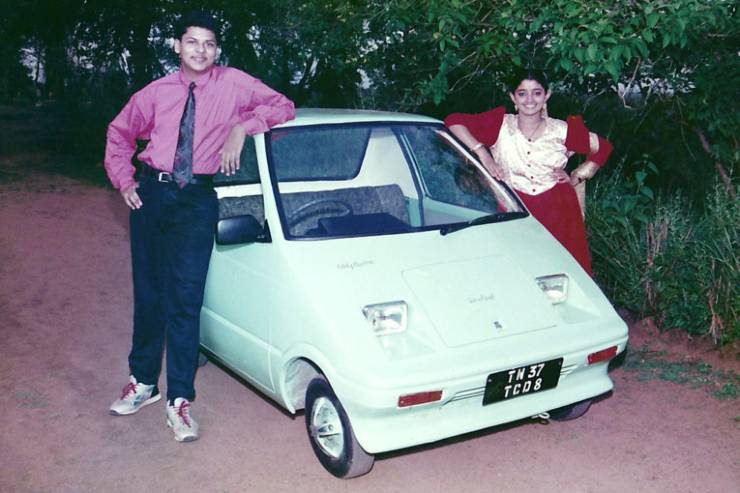India has been a highly responsive market when it came to automobiles. Today, we have manufacturers going to unimaginable length to make their car the best in their segments even with minute upgrades. When the automobile industry started spurring during its initial day, manufacturers experimented a lot using different technologies and sources of energy to run the car. However, only a few succeeded. Read along to find about one such manufacturer who launched an electric car back in the day called – the Lovebird.
The Lovebird was manufactured by the Eddy Electric series in 1993. The vehicle was first showcased at the Auto Expo in Delhi. It also received a few awards following its launch. The Indian Government was also on board and gave it a green signal. However, due to really low sale volumes, the manufacturer had to stop production.
The manufacturers behind the Lovebird were Eddy Current Controls (India) in collaboration with Yaskawa Electric Mfg. Co. from Tokyo, Japan. The car was produced in Chalakudy, Kerela and Coimbatore, Tamil Nadu. The Lovebird was a two-seater car that ran on a direct current electric motor powered by a rechargeable portable battery. The battery packs were not as advanced back then and therefore a lead-acid battery pack was used. We could not find the exact number of cells used in the car and there is no information about the power churned by the battery-operated engine. The Lovebird came with an electronic chopper which helped the car with a smooth speed control system to the driver.

The car came with a four-speed transmission with a reverse gear to provide efficiency at par with other cars in the market. The Lovebird could run up to 60 km on a full charge. The customer segment of this car belonged to city consumers or people from small cities. Since the fast-charging technology was not present back then, the battery used in the Lovebird would take about 8 hours to charge completely. The car also came with restrictions on the grade limit of 15 degrees which basically means that the car couldn’t legally ride on steep inclines as it wasn’t safe enough. It wasn’t a big problem back then as even developed cities didn’t have a lot of flyovers.
Why was it discontinued?

The units sold didn’t even cross a three-digit number for the Lovebird. Even with the best technology available, electric cars are still a long way to be accepted as petrol. Diesel or CNG powered cars in the Indian market. Back in the day, the power failures and deficiency on the part of proper electric supply could also have been a factor in the low sale number. The government also withdrew its subsidy for buying an electric car which in turn made the car expensive.
There were other manufacturers such as Sipani, Kazah, Aravind and Meera that were present in the Indian automobile market. However, with the introduction of the Maruti Suzuki 800, the Indian automobile market took a completely different turn.
Electric cars in India
The Electric Car’s face for India came with the eye-catchy design of the Reva. Even though Reva didn’t perform as expected, but it was definitely enough to stir up the thought of owning electric cars. Mahindra acquired the Reva and launched it as the E2O. Currently, manufacturers like MG, Tata and Hyundai are doing well in the electric car segment. We can expect a lot of new electric cars to be launched in 2021 and the following years.